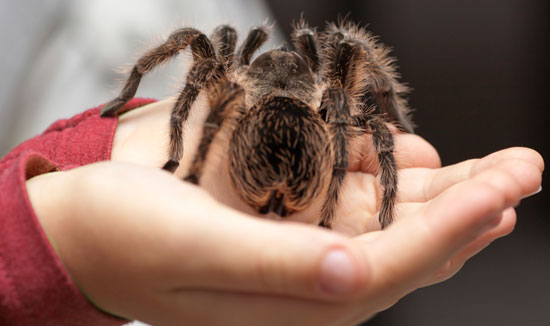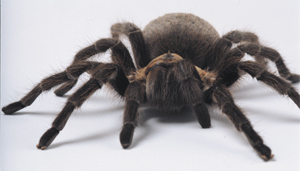How to Keep Spiders as Pets
Spiders can make fascinating pets. Here are a few steps to get you started keeping spiders.

Step 1: Catch a spider
Spiders are all around us, indoors and out, so they’re not hard to find. Some species can bite and a few are venomous. Learn about dangerous spiders in your area before heading out. It’s easy to safely catch a spider by using a small jar. Gently coax it into the jar using the lid. Spiders will eat each other, so keep only one per jar.
Step 2: Prepare a cage
Large spiders do well in the inexpensive plastic terrariums available from pet stores. Smaller ones can be kept in jars or plastic containers if air holes are drilled into the lid or sides. Be sure the holes are small enough to prevent escape.
Potting soil makes good cover for the cage bottom. Sticks, dead leaves or artificial plants provide structure for hiding, climbing and webbing.
Step 3: Water
Depending on the size of the spider, anything from a plastic bottle cap to a small bowl can serve as a water dish. Spiders also drink water sprayed on webbing, but you should never allow the cage to become damp.
Step 4: Feeding
Offer insect prey once or twice a week. Crickets are available from pet shops, or you can collect insects outdoors if no insecticides have been sprayed in the area.
Step 5: Observing
Watch your spider and take notes on its behavior. You won’t believe what happens in the spider’s web until you’ve visited it yourself!
PREFERRED PETS
 Not all spiders do well in captivity. Active hunters are usually easier to keep than web builders. Here are a few that make good pets.
Not all spiders do well in captivity. Active hunters are usually easier to keep than web builders. Here are a few that make good pets.
Tarantulas: Some species exceed 10 inches in legspan. They’re by far the most popular pet spiders and can be bought in pet stores.
Wolf Spiders: Some can be more than three inches in legspan. Large specimens do best in terrariums with lots of floor space.
Jumping Spiders: Although small and rarely exceeding half an inch, their jumping ability is amazing. Many species are brightly colored and can easily be kept in jars.
Fishing Spiders: In captivity, these large spiders appreciate vertically arranged pieces of bark for climbing. They’re very fast, so use caution when capturing them.
Grass Spiders: These spiders build funnel-shaped webs in grass, bushes and on buildings. In captivity, they will build extensive webs inside their cage.
LEARN MORE: Click here to see photos of a spider expert’s seven favorite spiders
hey just to a park after rain you can get jumping spiders
i have got one they are good pets their children will also come to you
Can you keep abanana spider in captivity???????????
This sounds fun, since I really like bugs. Beetles are harder to keep though, because they die quickly if they aren’t in nature, so I think spiders would be great to have instead! Tarantulas, and Wolf Spiders are pousinus, though, so you need to be really careful with those.
My mom has outlawed the keeping of any spiders in the house because of my little sister, she claims to be “allergic” to them. (My mom thnks they scare her,) but I’m still going to try to do this anyway! (Maybe I can hide the bug container I’m using in my closet. It shouldn’t bother “Little Miss Allergic-To-Spiders” in there! Thanks for the great idea! Now does anyone know how to get rid of sisters?? 🙂 😉 🙂 😉 🙂 😉
We have plenty of Wolf spiders around my house. But I have not been bitten. 🙂
You may not want to keep a Wolf spider. Because if you get bit (it has a little venom) First Aid is needed soon as posable. Thank You. 🙂
you know BL should have an issue with a bioligical map of spiders!!!
i love spiders but snakes are better
hou do you keep a spider as a pet
I caught a spider, I think its a jumping spider but I don’t know
i want a black widow(just cidding)